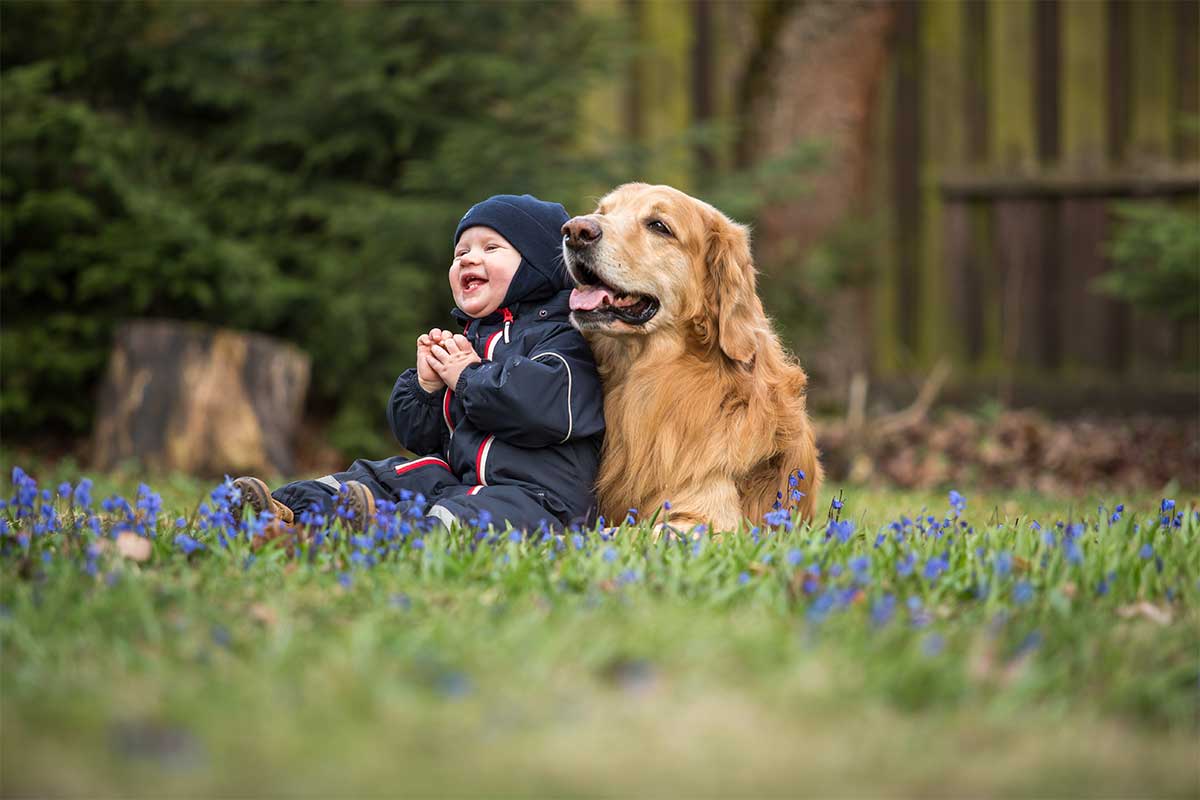Got a baby on the way? While you’re painting the new nursery and stocking up on diapers, don’t forget to involve your dog or cat in the new life joining your family. Well before your baby is born, you can begin to prepare your pet for this momentous change that will affect his life—in a great way if things go right. Here’s how to help ensure that your cat or dog becomes fast friends with his two-legged sibling.
The first step may be the most difficult. While you will still love your pet, there’s no denying that you will have less time to spend with him. Help accustom him to the change by gradually adjusting the amount of time you interact with him.
If he’s not already in the habit, now is the time for your pet to become comfortable staying on his own. Every pet, whether or not he lives in a family with kids, should be accustomed to having some “me time.”
Instead of taking him everywhere, as you may have done in the past, offer several short playtimes or attention periods during the day. To keep your dog or cat busy and prevent boredom and destruction, provide food puzzles, treat-dispensing toys, and other interactive playthings.
Consider a training refresh, especially if your pet has any problem behaviors such as jumping up on people, food- or object guarding, or housetraining lapses that could be a concern in a home with an infant or toddler. If necessary, work with a trainer or behaviorist who is certified in Fear Free techniques.
Take your pet to the veterinarian for a checkup. He should be in good health and free of parasites that could be spread to your new family member.
Dogs and cats rely more on scent than sight. Help them associate the smell of baby products such as lotions and creams with you and, eventually, your baby. Apply them to your hands before handling your pet’s toys and playing with him.
Sound is important to pets, too. Prepare them for baby noises by playing the a CD such as Preparing Fido. Start it at a low level, giving your pet his favorite treats, and gradually increase the volume. Reward him for staying relaxed as he hears the unfamiliar sounds of crying, laughing, screaming, giggling and more.
Using a doll, practice doing “baby things” such as changing a diaper or going for a walk while pushing a stroller. (It might be good practice for you, too.)
When the baby is born, have your spouse or another family member bring home a blanket, diaper or other item with the baby’s scent. That person should let your pet sniff it and give him a treat and praise him as he does so. This will help him to associate the baby with good things.
At home, greet your pet first without the baby. Then introduce him to your little one, giving him a favorite treat or toy during the encounter. With this foundation and careful supervision on your part so you can teach them how to behave toward each other, you will have started to build a happy, lifelong relationship between your children and animals.
This article was reviewed/edited by board-certified veterinary behaviorist Dr. Kenneth Martin and/or veterinary technician specialist in behavior Debbie Martin, LVT.








